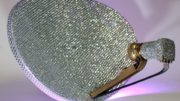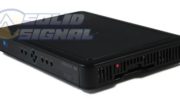That’s the question. I’ll admit that it’s a pretty specific one. But, it’s come up several times so it seemed like it was time for a blog article. For example, one of our customers wanted to put SWMs in several different locations in an RV park. This makes sense because the overall distance from the SWM to the receiver can’t be more than about 150 feet. But, where they wanted to put the SWMs didn’t have power. So they wanted to run power from another location and wanted to know how to do it.
The answer: it’s complicated
In order to understand the answer, we need to first understand the situation. So, here are some facts:
- SWM multiswitches get their power over coax. That’s right, there’s no power cord for a SWM multiswitch. The power is supplied over a coaxial cable, which is why DIRECTV requires a solid copper center conductor for all cables. Without solid copper, you lose too much voltage over that relatively thin wire.
- The PI-29Z power inserter is used for this purpose. The right tool for this job is the PI-29Z power inserter. It will pass satellite signals through it and supplies the voltage needed to power a satellite dish or a multiswitch.
- The voltage at the SWM must be 24 volts or more. This is a key point. You need to make sure that you’re supplying 24 volts to the multiswitch. You can supply a little more, but you shouldn’t supply less. If you supply less voltage, the switch will become less reliable.
- The rated voltage loss of DIRECTV RG6 cable is 10 volts per 100 feet. This may not be a real-world number, but it’s the rating that’s put on this sort of cable. That’s important because it will tell you how far away your power inserter can be and still power the dish. Since the power inserter starts at 29 volts and you need at least 24, that means you should make sure the cable run is 50 feet or less.
What can you do to improve this situation?
What if you need to run more than 50 feet? You can use solid-copper RG11 cable. Its thicker construction means it is generally rated to lose more like 6 volts per 100 feet. This means you could get 75 feet between power inserter and multiswitch. That’s not much of an increase but it’s something.
You can also take real-world measurements of the voltage passing through the specific cables you’re using. If you run 100 feet of cable, put some compression connectors on both sides, and find you’re only losing 5 volts, that’s great! You can’t rely on that but if you want to take the time to test every run before doing it and test every so often as well, it’s an option.
Another option is to run AC lines over longer distances. You can string or bury AC lines to get to the point where the multiswitch can get the voltage it needs. There are issues with this as well, because running AC lines can be kind of dicey. Local building code may not allow it and you’ll definitely want to run through some sort of conduit to keep people from digging and hitting it.
Here’s an option — expensive but even so
The maximum power draw from a PI-29Z power supply is 40 watts. That’s really not a lot of power. You could get that kind of power from a medium-sized solar panel. Combine that with a battery system and you could power that SWM 24/7 off solar. Of course as I said this is an expensive option but it is thinking outside the box. If you’re able to get all the other SWMs properly powered but just need an option for one, it might be worth it.
But, getting back to reality…
Realistically you’re going to need to find a reliable source of AC power for these power inserters. For most people it means housing them somewhere that already has power. For example, an apartment or outbuilding that’s used for another purpose. This is done all the time and the most important thing is letting the people who use that building know about it. A big “don’t unplug” sticker works wonders, for example. That’s the solution most people take.
Get the parts and service you need from Solid Signal
Solid Signal has all the parts you need for even the most complex DIRECTV installations. When you shop at Solid Signal, you’ll get the same parts and accessories used by DIRECTV technicians. But what if the installation is more complicated than you expected? Call the experts! We have trained commercial technicians ready to help you plan out the install. We can create BOMs, install diagrams, blueprints and more. Has it all gotten too big for you to think about? We can even dispatch an installer to you if it’s all gotten to be too much.
Just call us at 888-233-7563 during East Coast business hours. If it’s after hours, fill out the form below. We’ll get back to you, usually within one business day.





